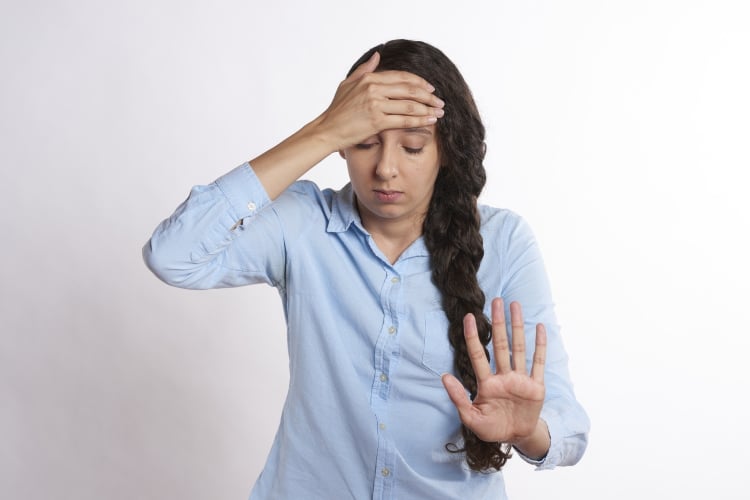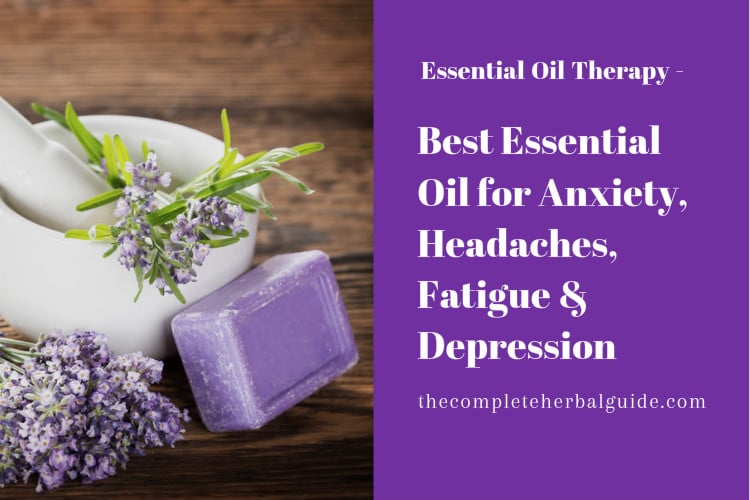
Top 21 Home Remedies To Make Your Migraine Disappear Naturally
By
Table of Contents
Here are 21 Ways To Make Your Migraine Disappear Naturally from home
If you’ve never experienced a migraine, consider yourself very lucky. All of us experience headaches from time to time, and while these can sometimes be quite severe, a migraine is different. It’s more than just a bad, nagging headache.
Migraines can last for hours or even days. The pain can be highly disabling, and the sufferer may be unable to attend to normal daily tasks. Migraines are often characterized by throbbing or pulsing pain, usually on one side of the head.
You may also experience vision alterations (such as an aura in your field of vision), impaired concentration, acute sensitivity to light and sound, tingling sensations, numbness, and changes to taste and smell. Some people also feel nauseous during a migraine attack and may have episodes of vomiting.
Sometimes, there are warning signs people experience when they’re about to have a migraine. A few of these include tingling on the face, arm, or leg (usually on one side), light flashes, or the introduction of the visual aura. If you are experiencing these, it’s time to act quickly to try to prevent a migraine from coming into full force.
While many pharmaceuticals are designed for treating migraine pain, many have a long list of unpleasant side effects. These drugs are often not recommended for long-term use because of the risks involved. For this reason, it’s worth it to your health to try natural options whenever you can.
The following are 21 ways to help prevent and remedy migraines naturally and from the comfort of your home.
Make sure you’re hydrated.
If you feel a migraine, make sure you’re not dehydrated. Drink a couple of glasses of water and try to relax. Staying properly hydrated at all times (at least eight glasses of water per day) is key.
Take a hot shower
For some people, taking a hot shower helps dissipate migraine symptoms once they’ve set in. Step into a hot shower, and let yourself soak. Stay in for as long as you need to. Hot water and steam can be highly therapeutic for many people. Some individuals may find that alternating between hot and cold water can help to ease the pain.

Take a warm lavender bath.
Lavender is a wonderfully soothing, gentle essential oil. It is used for many things, including stress relief and alleviating discomfort of various sorts. It may also help to ease migraine pain. In 2012, researchers performed a small study on the effects of lavender aromatherapy on migraine sufferers. In their results, the study authors wrote:
“The present study suggests that inhalation of lavender essential oil may be an effective and safe treatment modality in the acute management of migraine headaches.”
One option is to rub a few drops of lavender essential oil into your palms, cup them to your face, and take slow, deep breaths. Another is to add a few drops of lavender essential oil to a warm bath and soak. This combines the benefits of lavender with the benefits of warm water.
Dim the lights
Whether in the bath, shower, or lying on your bed or the couch, it may help dim the lights. If you don’t want to turn them off (turning lights off during bathing or showering could be dangerous!), try lighting a few candles or using a low-wattage lamp or two.
Try an ice pack
Try applying an ice pack or a cold compress to dull the throbbing pain in your head. It may also help to soak your hands in ice water for as long as possible.
Elevate your legs
When you’re lying down, lay on your back and make sure to elevate your legs. Hanging your head off the edge of the bed for a bit may help relieve some of the sharp pain, as it floods the area with blood.
Breathe from your diaphragm
Whatever other remedies you try, add deep, slow breathing. Focusing your breathing and slowing it down can help relieve the tension associated with a migraine and the anxiety it can cause. Try to breathe from your diaphragm. To do this, let your abdomen expand as you breathe in and contract as you breathe out.
Brew a strong cup of coffee or tea
This may not work for everyone, but for some individuals, a cup of strong coffee or black tea may help to ease migraine pain because of the caffeine content. However, caffeine may trigger migraines in some individuals, depending on how your body responds to it. If you do go this route, be sure to drink extra water, so you are hydrated.
Sip some dandelion root tea
Dandelion root has a wealth of anti-inflammatory properties and contains a range of vitamins. Sipping on this tea may help to prevent migraines from occurring. Simply brew some fresh, organic dandelion roots in boiling water. Add raw honey to taste.
Brew some fresh ginger tea
Ginger has long been known to help fight various kinds of pain thanks to its antioxidant content and anti-inflammatory powers. It has also been linked to the prevention and amelioration of migraine pain.
The authors of a study published in the Journal of Ethnopharmacology wrote:
“Ginger is reported in Ayurvedic and Tibb systems of medicine to be useful in neurological disorders. It is proposed that administration of ginger may exert abortive and prophylactic effects on migraine headaches without any side effects.”
You can either brew a cup of tea with fresh, peeled ginger slices or chew on a piece of peeled ginger to help relieve migraine pain. Ginger may also help relieve nausea symptoms, which many migraine sufferers experience.
Drink some cayenne pepper water

Like ginger, cayenne pepper is a known anti-inflammatory and pain-relieving agent thanks to its active ingredient, capsaicin. For this reason, drinking water with a bit of ground cayenne pepper may help to prevent a migraine from coming on.
Topical capsaicin jelly has been found in clinical studies to help as well. The authors of a study published in the International Journal of Clinical Practice wrote:
“Although referring to a small number of patients, our data show that topical capsaicin may relieve arterial pain in the absence of and during a migraine attack in a substantial number of patients experiencing scalp arterial tenderness.”
Try some water with molasses.
Molasses contains vitamin B6, which may help to alleviate stress, nausea, and head pain. Add a bit to your water, or use it to sweeten tea. Bananas, garlic, spinach, and sweet potatoes are other great sources of vitamin B6.
Eat some leafy greens.
Leafy green vegetables contain the all-important vitamin B3, a.k.a. niacin. This vitamin may help to relieve migraine pain. Along with leafy greens, other great sources of niacin include green peas, tomatoes, fish, and sunflower seeds, so make sure to get plenty of these foods into your diet.
Munch on some magnesium-rich almonds
Some research has found that supplementing with magnesium may help to prevent migraines. One way to ensure you’re getting an ample supply of magnesium is to eat magnesium-rich foods. Almonds make a great snack, salad topping, and more. Other nuts and seeds, leafy greens, fish, yogurt, and bananas, are also great choices for magnesium.
Rub tea tree oil on your temples
Rubbing tea tree oil on your temples is a time-tested traditional remedy for migraines. Make sure you obtain a high-quality essential oil from a source you trust.
Do some peppermint aromatherapy.
A study published in the International Journal of Clinical Practice tested the effects of a menthol solution applied to the forehead and temples of migraine sufferers. In their results, the authors wrote:
“Menthol solution can be an efficacious, safe and tolerable therapeutic option for the abortive treatment of a migraine.”
Peppermint essential oil is a wonderful, natural menthol-containing substance. You can dilute a bit in extra virgin coconut oil and apply it to your forehead and temples. Using peppermint essential oil in aromatherapy, or adding it to a warm bath, may also be effective.
Supplement with dry-leaf feverfew
Feverfew is a plant that has often been used as a traditional remedy for migraines. It may be especially effective in preventing migraines and during early migraine stages. If you go this route, check with a natural health professional you trust first, and make sure you buy from a reputable source.
Combining feverfew with willow bark may be an extra effective combination, but again, be sure to ask your doctor first.
Try a butterbur supplement.
Butterbur is another herb that is traditionally used to fight migraine pain. A study published in the journal Neurology tested the effectiveness of this herb on individuals with migraines. The study authors concluded:
“Petasites [butterbur] extract 75 milligrams bid is more effective than placebo and is well tolerated as a preventive therapy for migraines.”
As with feverfew, talk to a health professional you trust before taking butterbur and make sure you’re buying from a trusted source.
Compress with vinegar
Pregnant women sometimes experience migraines, and unfortunately, many of the herbs out there for migraines may be unsafe to take during pregnancy. One folk remedy for migraines during pregnancy involves soaking a cloth in vinegar and using it as a compress on painful areas. Allow approximately half an hour for the vinegar to soak into your skin.
Practice yoga
Some types of yoga, such as restorative yoga, may help to relieve stress and ease tension during a migraine. Of course, it’s not easy to begin learning in the middle of a migraine, but if you suffer from migraines, taking a yoga class in your area regularly may help in case one hit. Plus, yoga has many other benefits.
Schedule an acupuncture session
If you live near an acupuncturist you trust, scheduling a session when you feel migraine symptoms coming on — or earlier for preventative measures — may be effective. The ancient practice has traditionally been used for this purpose.
Are there other natural migraine remedies that you’ve found incredibly effective? If so, please let us know!
— Tanya Rakhmilevich, a writer for thealternativedaily.com







